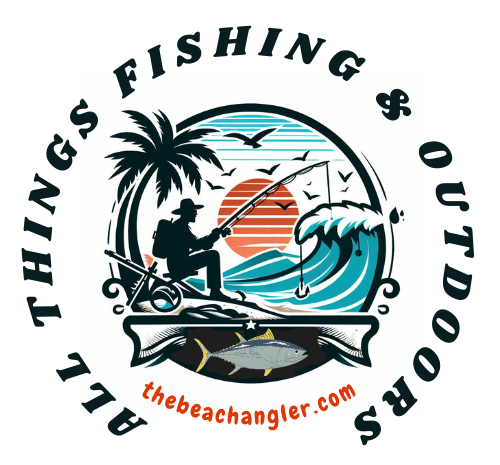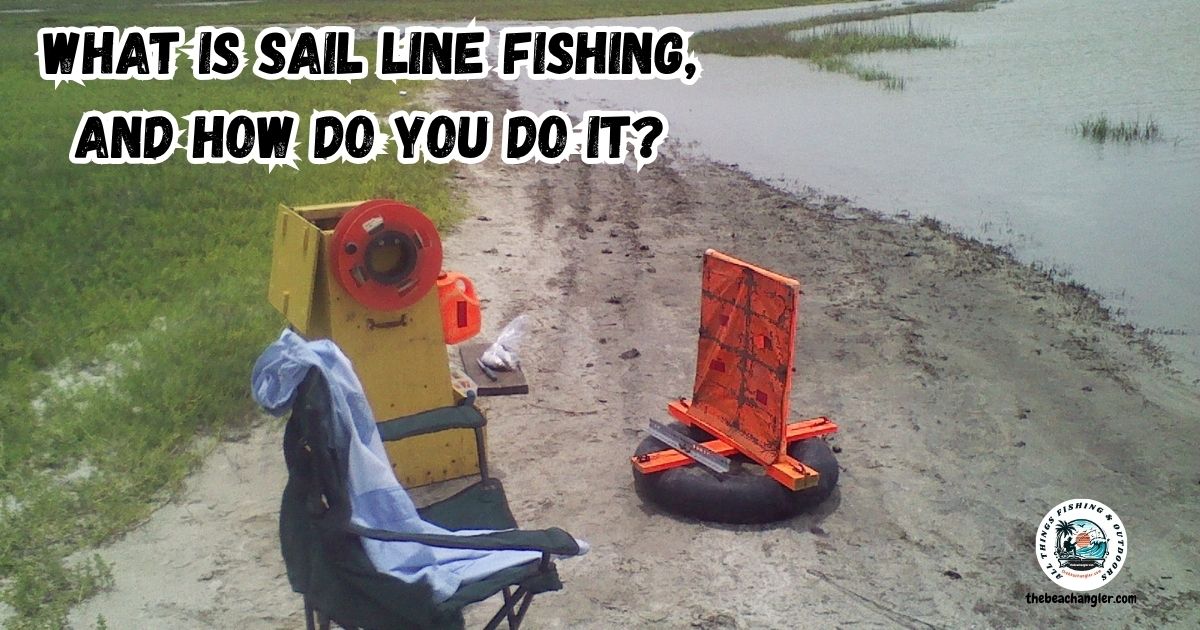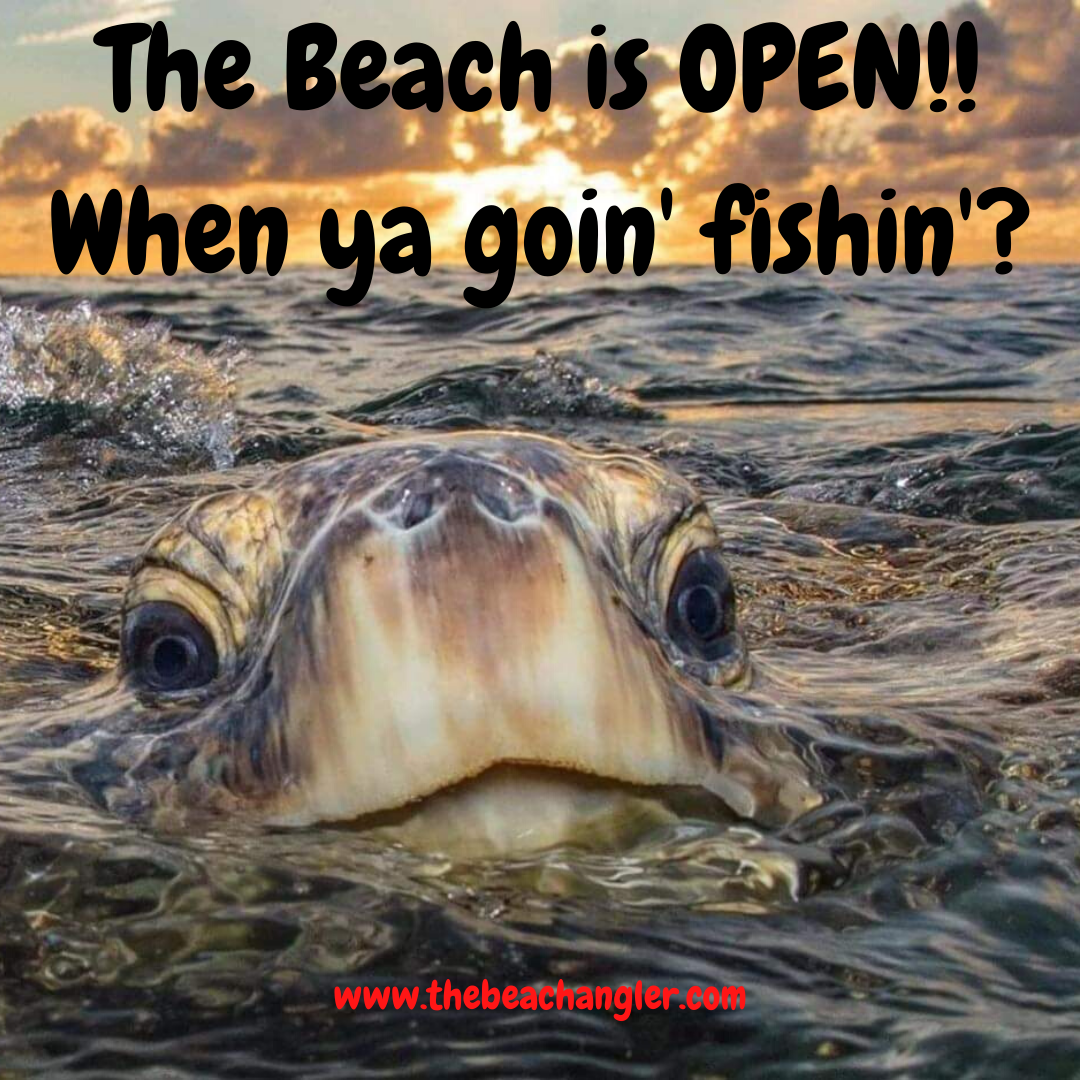Sail line fishing is a technique that uses wind power to move a baited fishing line across the water. This method has been popular among saltwater anglers who want to reach fish that are too far for casting.
QUICK LOOK: How a Sail Line Works.
- Setting Up the Main Line: I securely anchor one end of my heavy fishing line to a fixed point onshore, like a sand spike, fence post, or sturdy object.
- Attaching the Sail: I clip my wind-catching float or sail device to the far end of the main line. Some anglers use small parachutes or specially designed foam floats that work in most wind speeds.
- Baiting Hooks and Attaching Dropper Lines: I bait each hook and connect the individual dropper lines to the main line at my chosen intervals. The distance between hooks is set by state regulation, usually a few feet apart.
- Adding Weights: I attach weights partway down the line to help keep the bait below the surface and stable, especially in current or wave action.
- Launching the Sail Line: With some wind at my back, I set the sail in the water and watch it pull the line out to sea. The main line spools out smoothly as the wind powers the sail, stretching my hooks across a wide area.
- Monitoring the Line: I stay nearby and keep an eye on the line for bites, strikes, or any tangle issues.
- Retrieving the Catch: After waiting and checking for action, I hand over hand the line back to shore, collect my fish, rebait, and relaunch if I want another shot.
Instead of a rod and reel, I use a sailing device connected to my fishing line, which allows the wind to pull my hooks and bait further out into the bay or along the shoreline. I find this approach valuable for catching bigger and more fish, like red drum, black drum, speckled trout, or even small sharks, especially when other fishing methods are not producing.
What Is Sail Line Fishing?
Sail line fishing works by attaching a main fishing line to a wind-powered sail or float. One end of the main line is secured to something steady onshore, while the other end is pulled out to sea by the sail. Along the main line, I attach several baited hooks using shorter branch lines, called droppers.
As the sail catches the wind, it carries the baited line far from the shore. This covers a larger fishing area than casting a rod by hand could. Most of the time, sail line fishing is used in saltwater and coastal settings, especially along areas like the Texas Gulf Coast, where wind and open water make this setup work best.
Plenty of local anglers use sail lines for sport, targeting species such as spotted seatrout and big black drum. The technique is less common in freshwater because wind and open water space are both needed for the sail to carry the rig away from shore.
However, in some parts of Mexico and Central America, variants of the sail line technique have been adapted for use on wide rivers during windy months, although success rates vary.
The Main Parts of a Sail Line Fishing Rig
A sail line fishing rig isn’t complicated, but each component plays an important role. Here’s what I put together when I built my own:
- Main Line: A long, strong fishing cord or rope that runs from the shore out to the sail.
- Sail or Float: This launches the line away from shore using wind. Commercial versions are made of fabric or foam, but some DIY options use anything that floats and catches the wind.
- Hooks & Droppers: Up to 30 single hooks can be evenly spaced on short branch lines clipped along the main line, according to state rules. I use strong knots and durable hooks based on the target species.
- Weights: Weights keep the baited hooks at the right depth, often with at least one ounce required placed near the most shoreward float.
- Floats & Markers: Brightly colored floats keep the entire rig visible (required for safety and by law), making it easier for me and boaters to see.
- Reflectors: These are attached if I plan to leave my line overnight, making the rig visible after dark.
Putting all this together takes a bit of time, but I enjoy building my setups to match the exact shoreline and wind conditions where I’m fishing. Some anglers have switched up their sail materials, using kite or even lightweight parachute fabric, to make the most of lighter wind days while keeping their rigs moving steadily offshore.
How Sail Line Fishing Works Step by Step
Getting started with sail lines is straightforward, especially once I get the hang of the basic process. Here’s the general order I follow each time:
- Setting Up the Main Line: I securely anchor one end of my heavy fishing line to a fixed point onshore, like a sand spike, fence post, or sturdy object.
- Attaching the Sail: I clip my wind-catching float or sail device to the far end of the main line. Some anglers use small parachutes or specially designed foam floats that work in most wind speeds.
- Baiting Hooks and Attaching Dropper Lines: I bait each hook and connect the individual dropper lines to the main line at my chosen intervals. The distance between hooks is set by state regulation, usually a few feet apart.
- Adding Weights: I attach weights partway down the line to help keep the bait below the surface and stable, especially in current or wave action.
- Launching the Sail Line: With some wind at my back, I set the sail in the water and watch it pull the line out to sea. The main line spools out smoothly as the wind powers the sail, stretching my hooks across a wide area.
- Monitoring the Line: I stay nearby and keep an eye on the line for bites, strikes, or any tangle issues.
- Retrieving the Catch: After waiting and checking for action, I hand over hand the line back to shore, collect my fish, rebait, and relaunch if I want another shot.
This process feels both old-fashioned and high-tech at the same time. Some weekend events even host sail line competitions, where groups see who can set lines out the farthest, or catch the most fish, using only wind and homebuilt gear. Setting up takes some muscle and patience, but the payoff can be big when the wind does its job. Sometimes, friendly rivalries develop along busy shorelines as fishers try to outdo each other with clever sail modifications or ultra-creative floats.
Laws and Regulations for Sail Line Fishing
Sail line fishing is legal for sport in some coastal states, with the Texas Parks and Wildlife Department having the most well-known regulations. Legal requirements are pretty strict, and I always double-check the rules before heading out:
- Sail lines must be attended at all times when deployed. Leaving a line and walking away isn’t allowed, so I stick close by until the line is reeled in.
- No commercial fishing is allowed with sail lines. Only individuals with a sport fishing license can use them.
- The main line cannot be longer than a certain length (often 1,800 feet or less).
- Hook number and spacing are limited (a max of 30 hooks per line and usually several feet apart).
- Floats and the sail must be painted bright orange or red. Any additional floats need to be yellow, and reflectors are required for nighttime fishing.
- Weights of at least 1 ounce must be attached to the line, a set distance from the most shoreward float.
For more details, I look at the Texas Parks and Wildlife Department Gear Restrictions page. Rules may differ by county or state, so reading the local regulations carefully keeps me out of trouble and helps protect fish stocks. Some coastal counties may have their own added restrictions, like setting specific seasons for sail line use. Checking with local bait shops or rangers is a smart way to stay safe.
Why Use Sail Line Fishing? Pros and Cons
I use sail line fishing when I need to cover a lot of water or when I want to soak multiple baits at once. There are a bunch of pluses and a few minuses I’ve noticed:
- Efficiency: Deploying up to 30 hooks at once gives me more chances for action, much faster than casting one or two rods at a time.
- Distance: Wind power can get my bait twice as far as I could ever throw it, helping me reach waters unpressured by other anglers.
- Cost: Sail line rigs are low tech and don’t need expensive rods or reels. Most of what I use can be built with basic hardware store parts.
- Versatility: Targeting species like red drum, black drum, sharks, sheepshead, and others becomes possible with the right rigging and baits.
- Adaptable to the Current: Some setups let the current work instead of the wind. The sail acts more like a drift float, letting me fish in different conditions.
- Legal Restrictions: The strict rules on hook numbers, required attendance, and float markings mean I always have to pay attention.
- Sensitivity: I can’t always feel subtle bites like I can with a rod and reel. Sometimes small fish strike and steal bait without much notice.
- Time Intensive: Setting up, monitoring, and breaking down takes a while, especially if I need to move to a new spot.
- Weather Reliability: I’m fully dependent on having enough wind. Too calm, and my sail won’t move. Too windy, and the rig can tangle or go out of control.
Overall, sail line fishing is most useful when covering big areas or when I want to try a hands-on approach. It isn’t just for hardcore anglers, though—lots of families set up sails together on weekends, making a day of baiting lines and checking catches by hand.
Tips for a Successful Sail Line Fishing Trip
From my experience, a few simple habits can make a huge difference in results when I go sail line fishing:
- Use strong knots and good quality line to handle both the wind and the fight from larger fish.
- Check the weather forecast before I go. Steady winds around 10 to 15 mph are ideal, but knowing the latest updates can save hours of fruitless setup if conditions won’t cooperate.
- Bring backup gear for quick repairs. Extra floats, hooks, swivels, and line keep me fishing longer.
- Stay alert to changing conditions and always attend the line. This keeps me within the law and avoids any lost gear.
- Label gear with my info if required by law, and use marked, visible floats for safety.
- Rotate baits if bites are slow. Different fish respond to different baits, so I experiment until I find what’s working.
- Secure all connections and double-check knots. The constant pull from the wind means weak links will fail quickly.
- Wear gloves for handling long, sometimes heavy lines, especially when reeling in multiple hooks.
- If possible, bring a friend to help launch or retrieve the sail line if wind suddenly picks up—an extra set of hands makes launching in gusty weather much easier.
Combining patience with readiness goes a long way toward making each outing safe and fun.
Common Questions About Sail Line Fishing
Here are answers to a few things I often hear from people new to this method:
How long should my main line be?
Most anglers use lines from several hundred to 1,000 feet. I keep within any set legal limit and match the length to the water I’m fishing.
What happens if the wind changes direction?
If the wind shifts, the sail and line may tangle or drift ashore. I watch the wind and retrieve the line quickly if needed. Sometimes, repositioning the anchor helps keep things under control. In unpredictable wind, smaller sails prevent runaway equipment while keeping the rig safe.
Can I use sail lines in freshwater?
Sail lines work best in saltwater with lots of open space and steady winds. Freshwater lakes usually don’t offer enough wind or room, and rules might not allow this method. Still, small test runs can sometimes teach kids about wind currents and basic knot tying, even if fishing is limited.
What types of bait work best?
Natural baits like cut mullet, shrimp, or squid usually attract the most bites, but artificial lures can work if the fish are active. Scented baits may also give a boost, especially during slow periods. I keep a variety handy.
Real-World Applications and New Trends
Traditional sail line fishing focuses on sport and personal harvest, but I’ve seen new ideas coming into play, too. Some groups are experimenting with wind-powered fishing rigs for sustainable commercial harvest, without gas engines or pollution.
I’ve also chatted with environmentalists who see sail line fishing as a way to catch fish with less impact on sensitive shorelines, since there’s no need for heavy boats or wading into delicate marsh habitats. Groups such as Sail Line Fish have started promoting zero-emission fishing solutions, blending old-school methods with a modern push for sustainability.
There’s even interest among science educators who use simple sail line models to teach students about physics, wind science, and environmental stewardship in a truly hands-on way. Whether I’m out for sport, food, or catching up with friends along the beach, sail line fishing gives me a reason to spend more time outdoors and try unique ways to fish beyond the typical rod and reel.
As technology keeps evolving, more inventive sails and line materials keep popping up, which shows just how creative the sail line fishing community can get when chasing a big catch. It’s a blend of old tradition and new twists that keeps me coming back to the water again and again.
Check Out Our Most Recent Articles:
- Using a Personal Watercraft For Saltwater Fishing
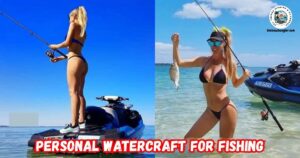
- 5 Advantages of the Penn Squall Low Profile Baitcasting Reels
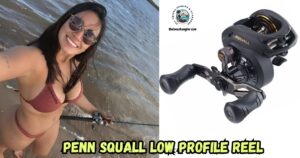
- Electronic Fish Finders For Kayak Fishing
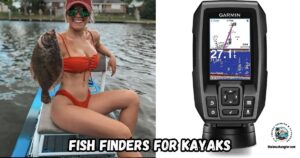
- What’s New From ICAST 2025

- 5 Budget-friendly Saltwater Fishing Kayaks For Beginners
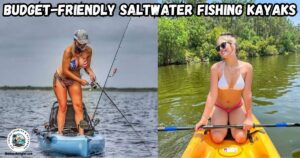
- 12 Tips for Fishing Baffin Bay, Texas

As always, stay safe, enjoy the journey, and please try to leave it cleaner than you found it. If you have any comments, questions, ideas, or suggestions, please leave them in the comment section below, and I’ll get back to you ASAP. You can follow us on Facebook: Rex The Beach Angler, Instagram: thebeachangler7, Twitter: @AnglerBeach, and YouTube: Man Art Creations.
P.S. Thanks so much for checking out our blog; we really appreciate it. Just so you know, we may receive a commission if you click on some of the links that appear on our site. This helps us keep our content free and up-to-date for everyone. We appreciate your support!
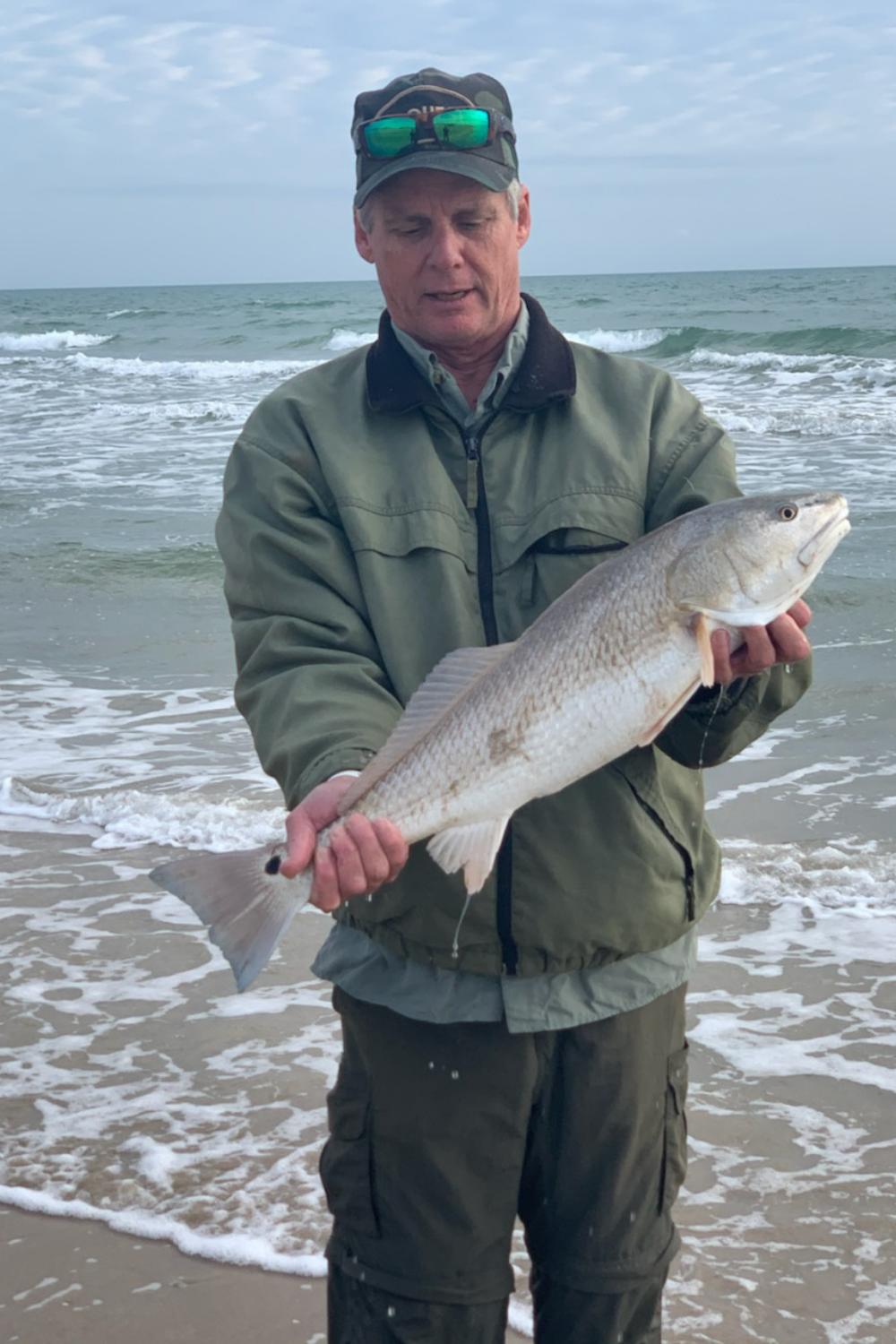
A life long surf fisherman with 50+ years of experience, I am also an avid hunter and outdoorsman. I will be sharing my passion for the outdoors with you so be prepared for hunting, fishing, camping, hiking and more. Along with gear reviews and the latest trends and innovations in the outdoor industry.
